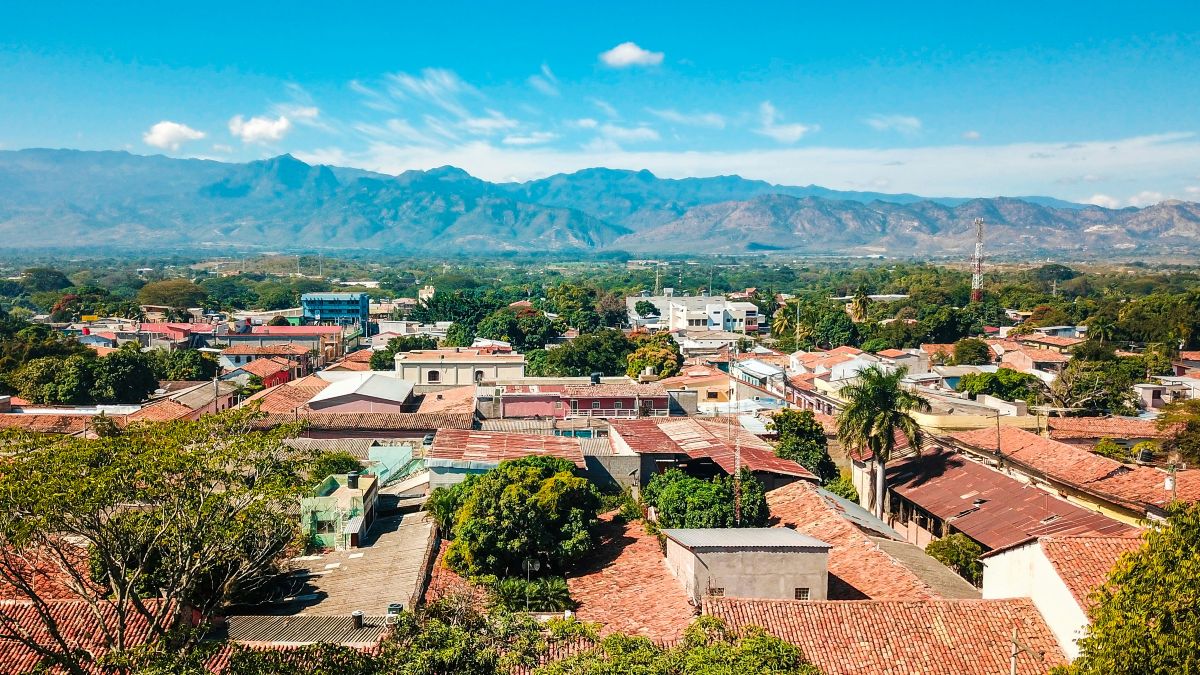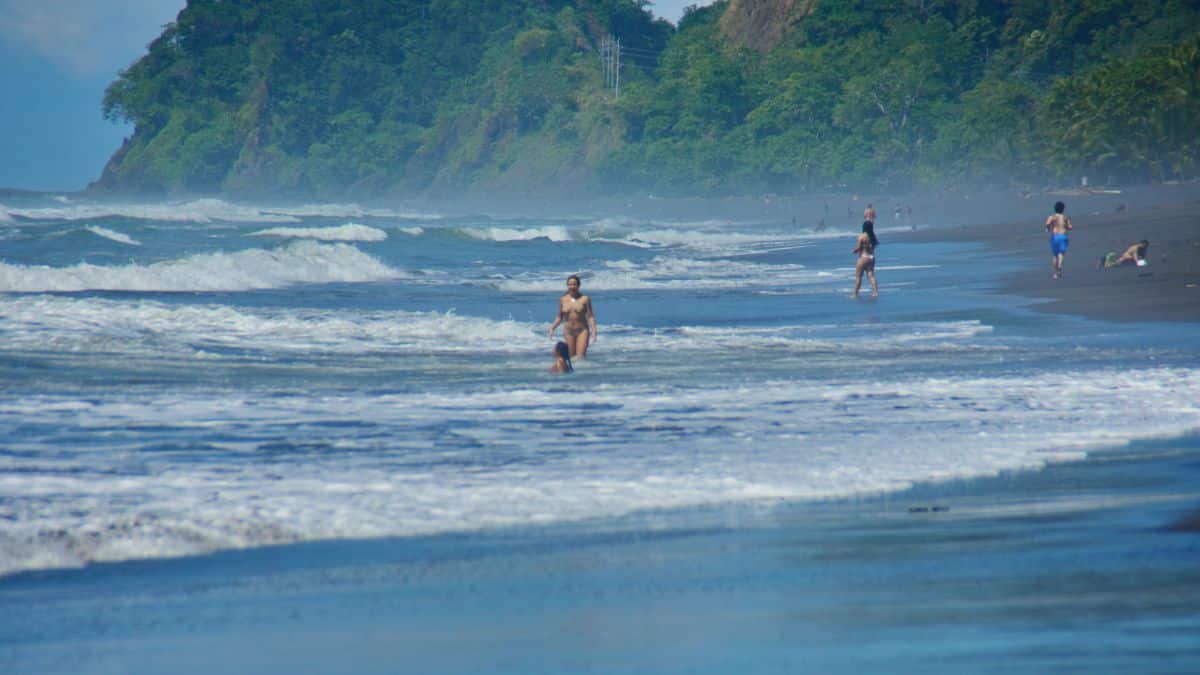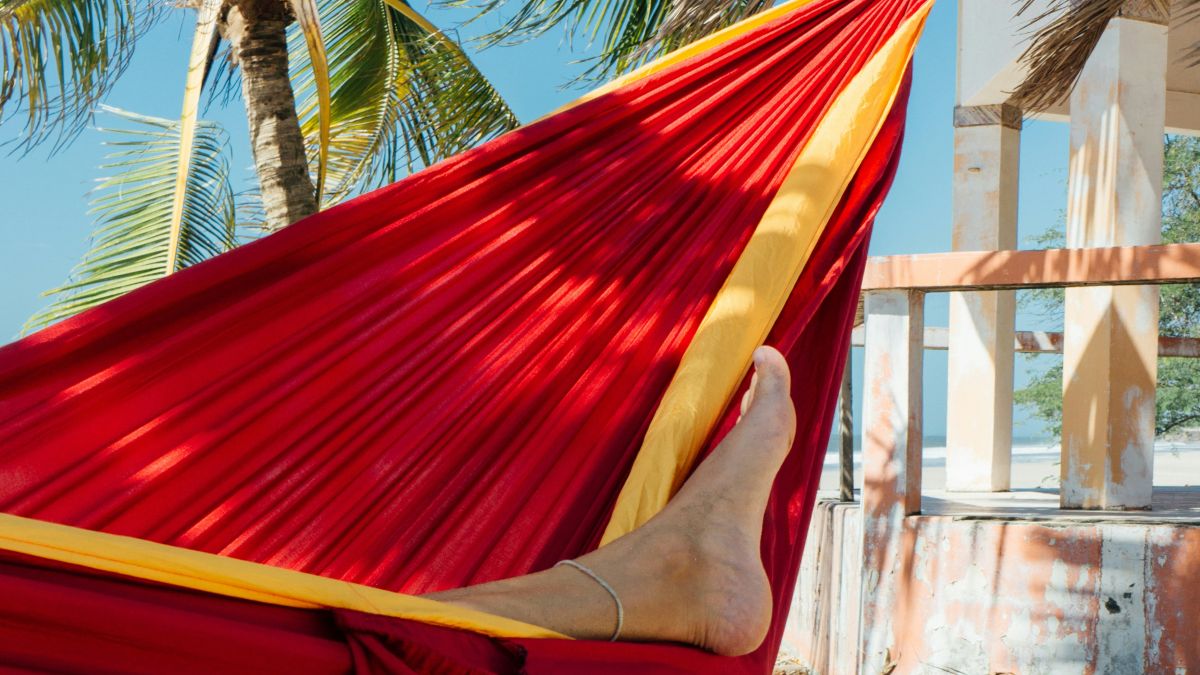New to Panama? Discover some Panama City grocery shopping tips from an expat and save money with local hacks!
When I first moved to Panama, there was one cost of living that didn’t feel cheaper at all. In fact, my daily eating suddenly seemed pricier than I’d expected. It hit me fast: I’d need to tweak my weekly grocery shopping habits to make it work.
Stepping into my first Panama City supermarket was an experience, with paramilitary guards posted at the doors. Sometimes other armed guys would take my book bag or scribble on my drink bottle to prove I hadn’t swiped it—definitely not your average shopping trip. And leaving was just as odd. I was used to chatty American checkout assistants, but the Panamanian cajeros? Aloof doesn’t even cover it. Someone once told me those jobs are hotly contested, yet once they’re in, they seem more focused on their makeup than on customer service—or even making eye contact.
Oh, and that metal plate where they scan barcodes? It’s not a scale. You’ve got to weigh your produce beforehand, using the metric system no less. Get ready to convert from Imperial measures—tricky enough sober, let alone after a drink or two. Speaking of which, here’s a fun twist: free booze tastings! Sometimes there’s a whole lineup of stands pouring full glasses. I’ve stumbled out with some wild buys—good thing I gave up driving.
But enough about me, let’s talk grocery shopping down here. In Panama, we’ve got three main supermarket chains, Riba Smith, Rey, and Super 99. Plenty are open 24/7, stocked with imported goodies alongside local brands. You’ll even spot health foods and kosher options if that’s your thing. Let’s take a look at them below:
Riba Smith
Established in 1946, Riba Smith is the expat favorite and my go-to supermarket. They carry many familiar foods from home and a great selection of alternatives. The layout of Riba Smith is also the most like the supermarkets I’m used to. It has a great butchers and fruit/veggies section. You’ll also find a deli selection of cold cuts, salmon, caviar, French cheeses, and great bread to put them on. They’ve got spots across the city and a solid wine selection, plus a bakery with local breads, pizzas, and crackers. Lately, they’ve beefed up their special-diet game with gluten-free, low-sugar, and kosher options. Prices are on the high side, but the produce lasts longer, and their online shopping with delivery’s a lifesaver when I’m too busy to trek out.
View this post on Instagram
Supermercados Rey
Rey is my second choice, and I alternate between here and Riba Smith. It has a respectable wine selection, good rotisserie chickens, and a nice choice of baked goods and hot food to go. It carries imported brands but not as many as Riba Smith. They’ve got locations all over and a deli with pre-made stuff like Greek salad and tasty empanadas. Prices are close to Riba Smith, and they’ve added a solid section for gluten-free, diabetic, and low-salt/sugar diets. Their points card’s a nice perk too… rack up enough, and you might score something cool.
Super 99
Owned by a former Panamanian president, Super 99 is more about local brands. The vegetable section is excellent. They have a good frozen food section and it is the best for cheap, ready-cooked hot food to take out. Super 99 has more locations than Riba Smith or Rey, and keeps prices competitive with clean stores and reliable stock.
Buying in Bulk
If you miss Costco and Sam’s Club, there’s PriceSmart, a warehouse chain that focuses on the international market. It’s the largest chain of its type in Central America with five stores around country (three around Panama City). With the same types of goods as Costco (the founders of PriceSmart merged their U.S. brand, Price Club with CostCo in 1997), members can bulk-shop for imported and local produce at a discount. You’ll find stuff like 5-pound bags of frozen strawberries, turkey cold cuts, and 2-pound cheddar blocks—things the others don’t always carry. Deals depend on what you’re after; I stick to toiletries, cooking oils, and meats to make it worth it. Annual membership starts at $43 per year.
Shopping Online
Online grocery shopping in Panama City is now a common practice. Uber Eats and other delivery platforms offer shopping options as well as restaurants. Riba Smith has an online presence and will deliver. PriceSmart has its own English-language website to make things even simpler. During the pandemic and Panama City’s lockdowns, online grocery shopping and delivery services was a vital mainstay of life in the city.
Budgeting Hacks
All these modern supermarkets make it easier for us to shop the way we did back home. And considering the markup on your favorite imported foods is up to 30 percent, you’re doing your budget no favors. Especially during these hard times. Switching imported products for local alternatives is one way to save money, but shopping like a Panamanian will save more. Meaning shop how our great-grandparents did before the invention of supermarkets.
You need to get used to shopping in more than one place. By using local butchers, fishmongers, and markets, your diet can be cheaper and more varied. The roadside papayas and bananas are fresh and cheap, and the ceviche at the fish market is delicious on a hot balmy day.
The fish market (Mercado de Mariscos) is, in fact, a definite must-visit for anyone coming to Panama City. Down by Casco Viejo, it’s buzzing from dawn when the fishermen roll in with fresh fish, shrimp, lobster, and octopus; some on ice, some still swimming in buckets. If you’ve got a kitchen, grab some. If not, hit the restaurant side. It’s just counters and plastic chairs with Latin tunes blaring (sometimes a game on a rigged-up TV) but the ceviche’s killer, a buck or two for fish or octopus in a cup. Fried platters of prawns or fish cost more but deliver. Anthony Bourdain loved this place.
Elsewhere, local coffee is a no-brainer to buy, it’s all good. Local beer? Also good! Get used to making your cocktails in a different way. Use the national drink Seco Herrerano at a fraction of the price of imported gin or vodka. And rather than looking for Maggie when you need chicken stock, buy caldo de pollo at less than a buck for five packets. On a lazy family weekend, I heat up frozen tamales rather than wings or corn dogs. The kids actually prefer them.
View this post on Instagram
Specialist Stores
For more discerning needs, there’s the DeliK Supermarket in Punta Paitilla, in the basement of MultiCentro. This has a great butchers section and also sells dairy. It’s a gem for kosher stuff and imported goods, with a nod to gluten-free, keto, and vegan diets too. Online ordering and delivery make it even better. There’s also Orgánica for health foods (with four branches in the city).
If you want a huge selection of Asian foods, the new Chinatown is in the El Dorado area. Maps may still say that Chinatown is alongside Casco Viejo, and it once was. But there’s nothing left there but the name, and a good restaurant. They all moved out to El Dorado long ago. Here you can find anything from White Rabbit candy to Kimchi.
The “Chinitos”
An honorable mention must go to the mini supers or corner stores you’ll find everywhere in Panama City. They are often run by Chinese immigrants, and referred to as “chinitos“. Here you can buy almost anything in small quantity. Two eggs, one trash bag, or a single cigarette. They are open all hours. This is where you’ll also be filling your propane gas canisters so you can cook in the first place.
So I’ve now got used to using new products and my taste has adapted. My pantry has evolved and looks very different now, but best of all I’ve cut down on my grocery bill big time. It’s been a journey—trial, error, and a few tipsy purchases—but I’ve cracked the code to eating well in Panama City without breaking the bank. Turns out, going local doesn’t just save cash; it’s opened up a whole new world of flavors I wouldn’t trade for anything.




